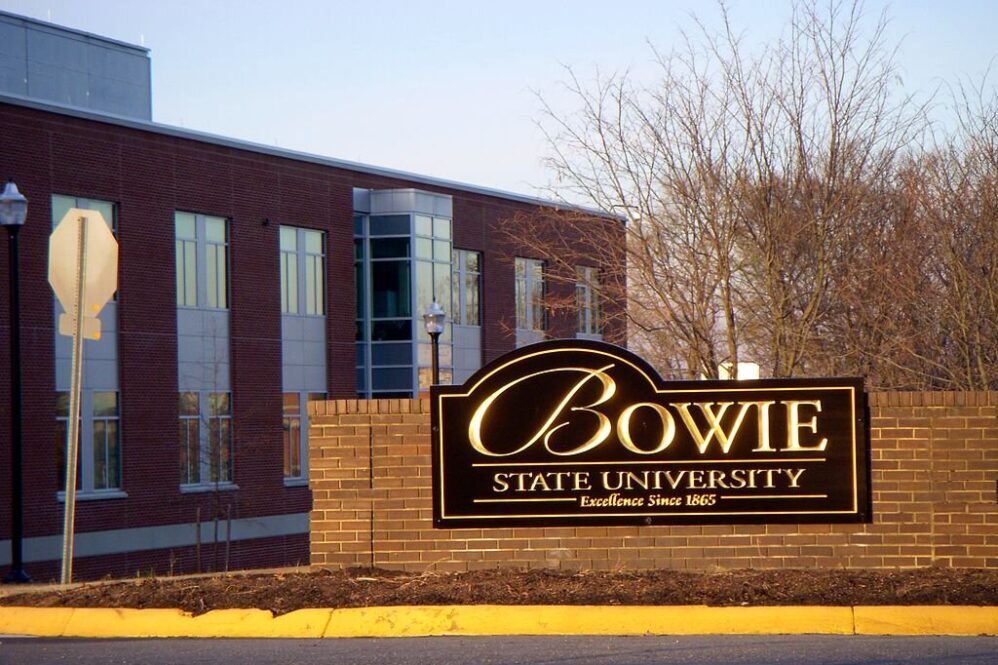WASHINGTON BUSINESS JOURNAL: Endowments at Greater Washington’s colleges and universities have grown considerably in recent years — none more than Bowie State University, Maryland’s oldest historically Black college oruniversity.
That’s according to a recent Business Journals analysis of data from the Department of Education.
Bowie State, led by President Aminta Breaux since mid-2017, grew its endowment from $10.5 million in fiscal 2019 to $41.28 million in fiscal 2022 — a 292.9% increase over that span. Last year, theuniversity reached a $50 million fundraising goal two-and-a-half years ahead of schedule. Some of those gifts went to Bowie State’s endowment.
While Bowie State has grown its endowment considerably, the overall size of that endowment is on the smaller end in Greater Washington — a reflection of the historic underfunding and otherchallenges facing HBCUs.
Nationally, endowments at U.S. colleges and universities declined 4.5% between 2021 and 2022 — but are up 32% since 2019. While the early pandemic stock market boom produced exceptional results for some universities, it also widened the gap between the very wealthiest schools and all others.
Endowments support a variety of initiatives at many schools and are designed to ensure universities can fulfill their missions in the long term, but critics often question the purpose of the nation’s largest, multibillion-dollar endowments.
Georgetown University in D.C. has the region’s largest endowment, according to the Department of Education data, coming in at $3.21 billion in fiscal 2022, a 76.1% increase from 2019. GeorgeWashington University is next on the local list, with a $2.34 billion endowment in fiscal 2022, an increase of 31.6% over that same time span. Just below the $1 billion mark, the University of Maryland grew its endowment 39.5% between fiscal 2019 and fiscal2022 to $965.45 million.
In terms of fastest-growing endowments over that span, Georgetown was next behind Bowie State at 76.1%, while Fairfax’s George Mason University grew its endowment 42.7% between fiscal 2019 and fiscal 2022 to $142.35 million. However, Mason’s endowment actually shrunk 17.7% between fiscal 2021 and fiscal 2022 — part of that overall decline mentioned above.
Among Greater Washington’s other HBCUs, Howard University grew its endowment 24.5% between fiscal 2019 and fiscal 2022 to $862.78 million, according to the data, while the University of the District of Columbia grew its endowment 8.2% over that span to $53.5 million.
In the searchable database below, you can compare endowment totals for all American universities with available data from fiscal year 2022. Some schools have calculated their fiscal 2023 endowments, but they aren’t yet available through the Department ofEducation.
Among the nation’s 10 wealthiest universities, the endowment average growth rate between 2022 and 2023 was -1.6%. Those schools have already reported their 2023 numbers, while many schools’ most recent data is from 2022.
Harvard University ($50.9 billion), Yale University ($41.4 billion) and Stanford University ($36.3 billion) have the highest overall endowment totals.
But when looking at assets per student — another indicator of wealth in the higher education sector — Princeton comes out on top with $6.3 million per undergrad, followed by Yale ($6.2 million), the Mayo Clinic College of Medicine in Rochester, Minnesota ($5.6 million) and Harvard ($5.4 million).
Those are the only four schools topping the $5 million mark in endowment assets per student.
But some insiders worry the intense asset growth at elite schools contributes to organizational inequality, channeling a growing share of higher education spending to students from advantaged backgrounds.
They are also advocating for more transparency around endowments and spending.
“Elite, private university endowment investments remain opaque and secretive,” said Charlie Eaton, an economic sociologist at University of California at Merced.
While schools with the most generous endowments are predominantly private, several large public universities also appear on our list of wealthiest schools. However, due to larger student bodies, their endowment assets per undergrad ratios wereconsiderably lower than that of the smaller, private schools.
In a separate 2019 report compiled by the Center on Budget and Policy Priorities, researchers found 41 states spent less per student in 2018 than they did in 2008. On average, that shortfall was 13%, or $1,220. In six states — Alabama, Arizona, Louisiana, Mississippi, Oklahoma and Pennsylvania — per student funding fell more than 30% during that time. Arizona topped the list with a state funding drop of 55%.
These drastic cuts could explain some public universities’ focus on endowments.
But endowments aren’t strictly bank accounts for colleges and universities, as the funds are often tied to spending stipulations laid out by benefactors. Eaton said some schools are increasingly directing gifts to endowments then using tax-exemptmunicipal bonds to finance named buildings and facilities associated with donors.
These practices “exploit tax subsidies for donations that rarely go to expanding schools’ socioeconomic diversity and undergraduate enrollments,” Eaton said.
“Sequestering funds in endowments at public universities can come at the expense of funding enrollment growth and instructional support,” Eaton said. “The general public should particularlyquestion when public universities propose spending cuts without drawing on their endowments.”










